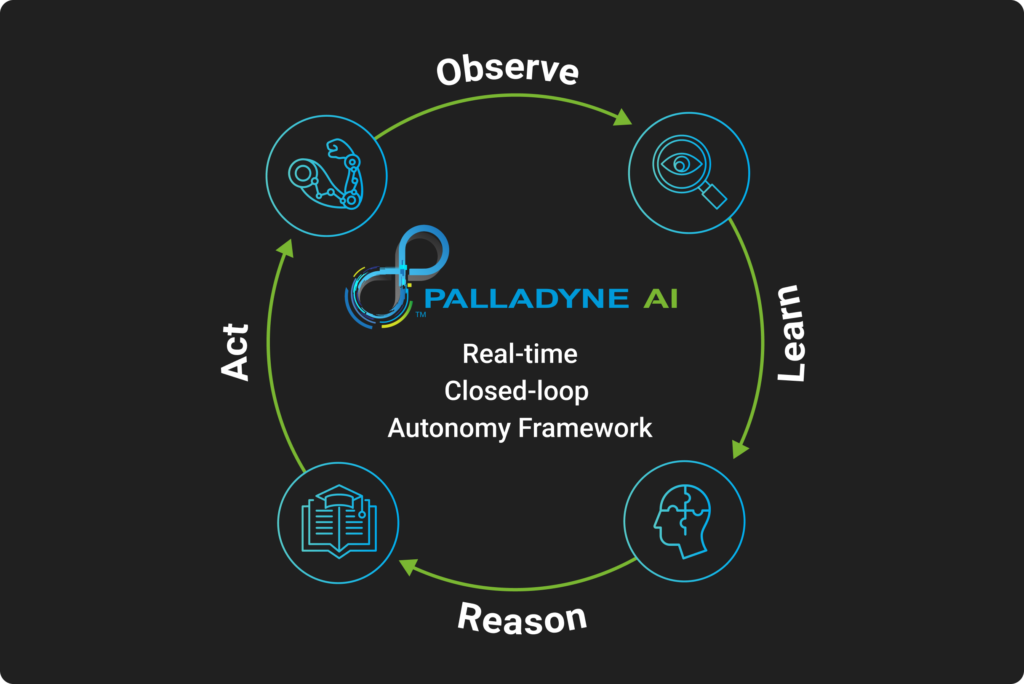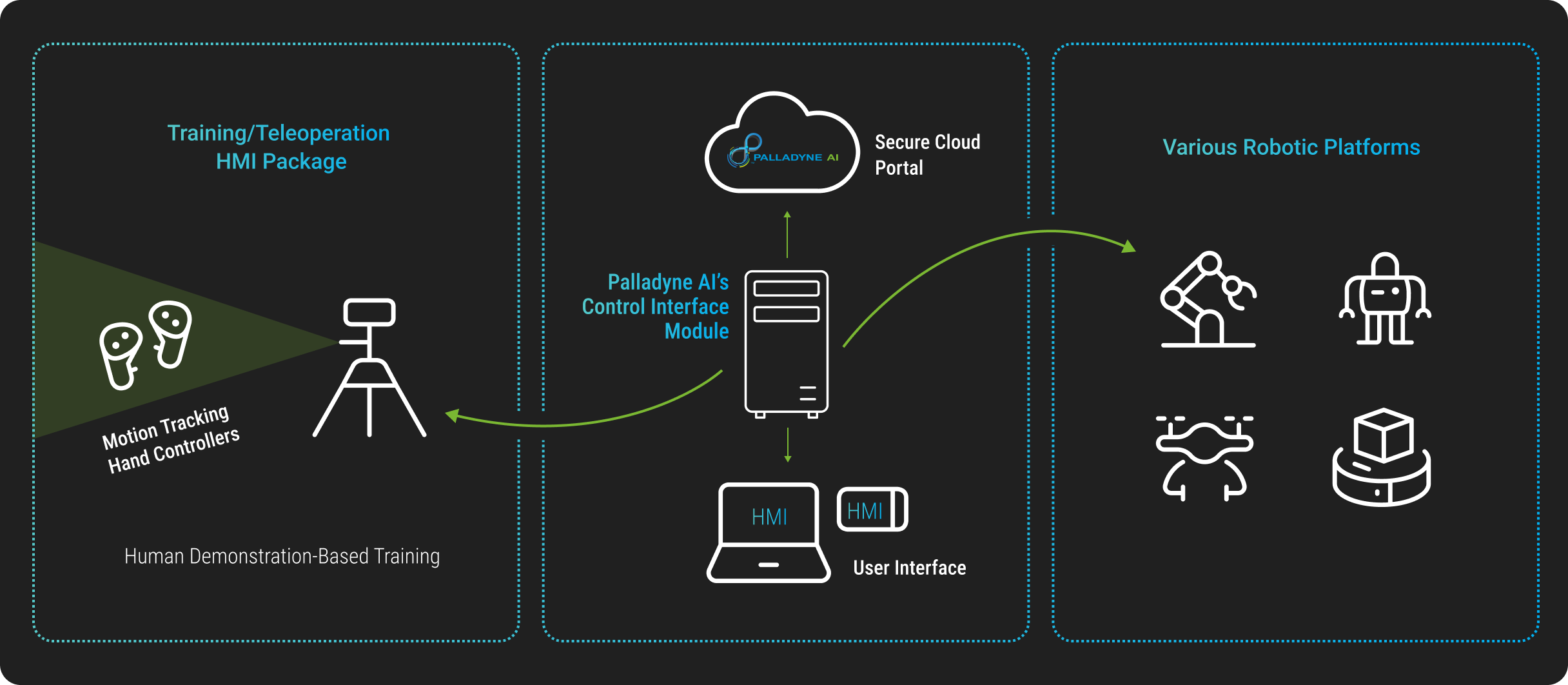

The Palladyne IQ robotic software platform is designed to enable machines to observe, learn, reason, and act like humans by:
“The key for us is enabling autonomy in an unstructured environment that can dynamically change. We focus on generalized autonomy, providing closed-loop functionality to adapt to tasks continuously.”
Dr. Denis Garagić
Palladyne AI CTO & co-founder
The Palladyne AI approach to robotic automation differs from the rest. The advantages of the Palladyne IQ robotic software platform are highlighted by:





The ability for robotic systems to comprehend their surroundings is the foundation upon which our platform builds its remarkable capabilities.

The learning process is expedited, with robots typically acquiring a new task in just one to five human-controlled demonstrations. This efficient learning process ensures your operations remain agile and responsive to ever-changing demands.

Robots powered by the Palladyne AI software platform are able to reason similarly to human logic when faced with unexpected events. The stored Task Library serves as a starting point, allowing the robot to adjust to circumstances in real-time, ensuring seamless operation and uninterrupted productivity.

Applying human-like logic, robots adapt their task model in real-time to translate observations into precise control messages, ensuring safe and controlled completion of tasks without the need to halt production for reprogramming after disruptions. Your operations will run smoothly, even in the face of unexpected challenges.
By enabling autonomy, reducing programming complexity, and enhancing efficiency, we are paving the way for a future where machines can excel in tasks that were once considered beyond their reach.